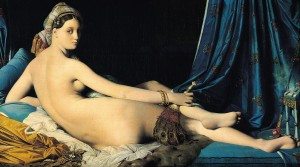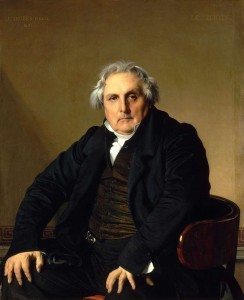The Prado Museum current exhibition gives a close look at the technique of one of the most revered artists in the history of drawing and provides an occasion to learn from his example.
The exhibition presents itself touches on his complex relationship with the art of portraiture, (the sacred art which has secured his place as one of the great painters of history), torn between ambition and repulsion.

The works of Ingres and his very individual aesthetic represent a key movement towards the artistic revolutions of the end of the 19th century and the beginning of the 20th century.
He inspired the rejuvenation of the European schools of the 19th century, particularly in Spain, but also foreshadowed the genius of Picasso by employing anatomical distortion, like in his Grande Odalisque (1814, Louvre Museum) which lengthened the back, an image of pure nudity with no narrative justification, has been one of the most influential images in the history of modern painting. “Ruggiero rescuing Angelica” depicts a sensual, voluptuous woman who is a clear paradigm of contemporary eroticism, while “The Turkish Bath” from the Louvre, a legendary work that summarises Ingres’ fascination with repetition, champions the curve as the ideal form for expressing his tireless enthusiasm with the female body, once again located in an exotic context.
 The numerous portraits that he realised for tourists in his early years in Italy he portrayed an uncanny control of a delicate yet firm line and an inventiveness in posing sitters to reveal their personalities. He captured his figure with an impressive photographic likeness. The numerous portraits that he realised years later remain a mirror of the bourgeois society of his time, as Ingres knew particularly well how to render the texture of clothes and fabrics, indicators of a social level.
The numerous portraits that he realised for tourists in his early years in Italy he portrayed an uncanny control of a delicate yet firm line and an inventiveness in posing sitters to reveal their personalities. He captured his figure with an impressive photographic likeness. The numerous portraits that he realised years later remain a mirror of the bourgeois society of his time, as Ingres knew particularly well how to render the texture of clothes and fabrics, indicators of a social level.
Ingres painted the grace and splendor oh his female elite sitters with photographic realism

During his 87 years he had frequently seen the critical response to his work go from unabashed scorning to enthusiastic accolades.Today, Ingres is still viewed as a master of the 19th century. He continues to spark the interest of modern art critics and galleries of his work are in wide reception.